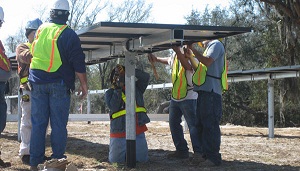State energy funds responsible for nearly 5 GW of renewable energy growth

New analysis by the Clean Energy States Alliance (CESA) shows that state energy funds have supported nearly 5 gigawatts of renewable energy development between 1998 and 2011. And it shows that the trend in such projects is growing, and that the funds handily leveraged more money than was invested into them, creating a net positive economic benefit.
The analysis was released in the CESA report: The Rising Tide of State-Supported Renewable Energy Projects: Results from the CESA Database, 1998-2011. The report, based on CESA's National Clean Energy Database, found that 129,420 projects comprising 4.8 gigawatts of clean energy, like solar, wind and biomass, were supported by clean energy funds. The growth in clean energy continued despite the economic situations facing the country, said CESA Executive Director Mark Sinclair. “The better news is that, after 13 years of data collection, we feel confident that these industry trends are here to stay,” he said.
If the trend continues, solar, wind and other renewable installations will continue to grow annually. In fact, according to the organization, the volume of new projects has increased every year—except 2005—since 1998. The biggest leap in clean energy funds was between 2009 when 18,642 clean energy projects were installed and 2010 when 27,798 clean energy projects were installed. The growth between 2010 and 2011 continued the overall upward trend, with 32,734 clean energy projects completed last year, an 18 percent increase over 2010. The increase in installed cumulative capacity followed a similar upswing.
The overwhelming number of projects and capacity added through the clean energy funds in 2011 were photovoltaic (PV) projects, according to the report. That year a total of 31,311 PV projects comprising 367 megawatts were supported by clean energy funds. The next highest, in terms of installation volume, was solar thermal with 724 projects consisting of 243 kilowatts. In terms of capacity, hydro was the closest to solar with 23 newly installed projects generating 112 megawatts of electricity.
The report also found that the state clean energy funds encouraged additional investment. “For every $1 of state funds invested, other funding sources provided $3.42 of additional capital,” the report stated. That more than quadrupled the amount of funds for the period So states’ clean energy funds of $3.4 billion over the period was leveraged to approximately $12.5 billion, bringing the total investment to $15.9 billion. According to the report the majority of additional funding was from private investments, though some was from foundations and municipalities.



